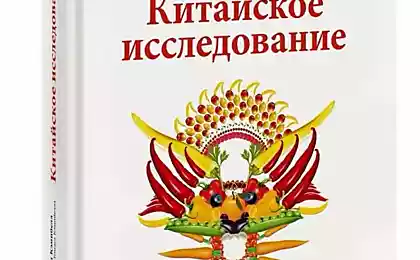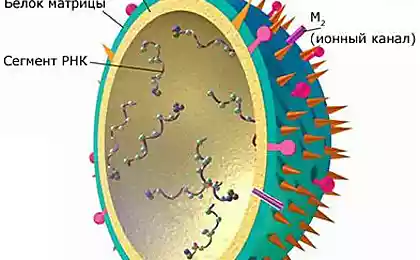127
Baikal helmet: a cure for many diseases
Helmet Baikal, known under other names: scutelaria, jen-len, huang-qin. By the way, this plant has long been widely used in Tibetan and Chinese medicine. On its basis, medicinal and cosmetic drugs are produced.

What are the benefits of the Baikal helmetThe roots of this super-plant contain flavonoids, pyrocatechins, starch, tannins, etc. The helmet is an almost universal tool for preventing diseases and maintaining health. Tinctures and decoctions are used for hypertension, allergies (during seasonal rhinitis), rheumatism, insomnia, heartbeat disorders, as well as antipyretic, wound-healing, antihelminthic, sedative. The list of diseases in which the helmet is useful is extensive. There are few contraindications to use: pregnancy, lactation period and individual intolerance, which is extremely rare.
What this unique plant looks like
Scutellaria Baicalensis Georgi (Latin Scutellaria Baicalensis Georgi) is a species of perennial herbaceous plants belonging to the family of lipaceous (clairvoy). In natural conditions it grows in Transbaikalia and in the Far East.
The root system is rod-like. The main root of most plants is twisted around its axis, in the section it is bright yellow. The height of plants rarely exceeds 60 cm. Branches well, starting from the root. The stems are tetrahedral. The leaves are stubborn, narrow-lancent, sedentary, all-edged, bright green, on the lower side with black dots.

This is what all parts of the Baikal helmet look like.
The flowers are solitary, formed in the sinuses of the leaves in the upper third of the stems. The shape of the flowers is helmet-shaped (from this and the name), with a convex upper lip and an expanded tube. The color of the flowers is more often lilac, less often blue, white, yellowish-cream.
When grown from seeds, it usually blooms in the second year, rarely in the year of planting, with the exception of early sowing. The blossoming of the skullcap is long, begins in June, can last until October, if weather conditions allow. The seeds ripen in September.
Cultivation and care
Baikal helmet grows well in sunny places, but also penumbra bears. The soil is unpretentious, although on neutral, nutritious, moisture- and breathable roots grow larger. Before sowing in the soil, it is desirable to make compost and ash. The seeds of the helmet can be sown both in winter and in spring. In the first case, the percentage of shoots is higher. Given the small size of the seeds, the optimal depth is 0.7 cm.
If the shoots are too thick and there is a need to plant them, then this should be done with the preservation of an earth coma and at a time when 4 real leaves grow on the plant. In later life, transplantation is problematic due to the rod root system. The helmet is drought resistant, watering is required only during a prolonged drought.
For the winter shelter is not required, but the above-ground part is better left, removing it in the spring. So the Baikal helmet with a greater guarantee overwinter. In warm regions, you can cut the stems, leaving the hemps as landmarks, so as not to accidentally dig up next season. In the spring, it is desirable to feed with nitrogen fertilizers, and in the period of budding - complex.
Harvest collection and storageThe roots of the helmet can be dug after flowering, and it is possible after the fall of the leaves, i.e. at the end of the season, when flower beds are prepared for winter. They are washed, some are used immediately for the preparation of tinctures, and the excess is dried in the shade. After complete drying, the roots are stored in glass jars covered with lids, paper or cloth bags.
Use in landscape design
The Baikal helmet can be used in any types of flower gardens: mixboarders, flower beds, mountaineering, rockariums, etc. The group landing looks no less attractive against the background of the lawn. Given the long flowering, the helmet can play both a major role in the flower garden and a secondary one, depending on which partners will bloom at the same time. It goes well with plants that have yellow and white flowers, for example, gypsophile, enotera, lilies, etc. It is also suitable for container growing.
We hope that a new tenant will appear on your site this season - the Baikal helmet, and the tablets in your first aid kit will decrease due to unnecessaryness. published
P.S. And remember, just changing our consumption – together we change the world!
Source: 101dizain.ru

What are the benefits of the Baikal helmetThe roots of this super-plant contain flavonoids, pyrocatechins, starch, tannins, etc. The helmet is an almost universal tool for preventing diseases and maintaining health. Tinctures and decoctions are used for hypertension, allergies (during seasonal rhinitis), rheumatism, insomnia, heartbeat disorders, as well as antipyretic, wound-healing, antihelminthic, sedative. The list of diseases in which the helmet is useful is extensive. There are few contraindications to use: pregnancy, lactation period and individual intolerance, which is extremely rare.
What this unique plant looks like
Scutellaria Baicalensis Georgi (Latin Scutellaria Baicalensis Georgi) is a species of perennial herbaceous plants belonging to the family of lipaceous (clairvoy). In natural conditions it grows in Transbaikalia and in the Far East.
The root system is rod-like. The main root of most plants is twisted around its axis, in the section it is bright yellow. The height of plants rarely exceeds 60 cm. Branches well, starting from the root. The stems are tetrahedral. The leaves are stubborn, narrow-lancent, sedentary, all-edged, bright green, on the lower side with black dots.

This is what all parts of the Baikal helmet look like.
The flowers are solitary, formed in the sinuses of the leaves in the upper third of the stems. The shape of the flowers is helmet-shaped (from this and the name), with a convex upper lip and an expanded tube. The color of the flowers is more often lilac, less often blue, white, yellowish-cream.
When grown from seeds, it usually blooms in the second year, rarely in the year of planting, with the exception of early sowing. The blossoming of the skullcap is long, begins in June, can last until October, if weather conditions allow. The seeds ripen in September.
Cultivation and care
Baikal helmet grows well in sunny places, but also penumbra bears. The soil is unpretentious, although on neutral, nutritious, moisture- and breathable roots grow larger. Before sowing in the soil, it is desirable to make compost and ash. The seeds of the helmet can be sown both in winter and in spring. In the first case, the percentage of shoots is higher. Given the small size of the seeds, the optimal depth is 0.7 cm.
If the shoots are too thick and there is a need to plant them, then this should be done with the preservation of an earth coma and at a time when 4 real leaves grow on the plant. In later life, transplantation is problematic due to the rod root system. The helmet is drought resistant, watering is required only during a prolonged drought.
For the winter shelter is not required, but the above-ground part is better left, removing it in the spring. So the Baikal helmet with a greater guarantee overwinter. In warm regions, you can cut the stems, leaving the hemps as landmarks, so as not to accidentally dig up next season. In the spring, it is desirable to feed with nitrogen fertilizers, and in the period of budding - complex.
Harvest collection and storageThe roots of the helmet can be dug after flowering, and it is possible after the fall of the leaves, i.e. at the end of the season, when flower beds are prepared for winter. They are washed, some are used immediately for the preparation of tinctures, and the excess is dried in the shade. After complete drying, the roots are stored in glass jars covered with lids, paper or cloth bags.
Use in landscape design
The Baikal helmet can be used in any types of flower gardens: mixboarders, flower beds, mountaineering, rockariums, etc. The group landing looks no less attractive against the background of the lawn. Given the long flowering, the helmet can play both a major role in the flower garden and a secondary one, depending on which partners will bloom at the same time. It goes well with plants that have yellow and white flowers, for example, gypsophile, enotera, lilies, etc. It is also suitable for container growing.
We hope that a new tenant will appear on your site this season - the Baikal helmet, and the tablets in your first aid kit will decrease due to unnecessaryness. published
P.S. And remember, just changing our consumption – together we change the world!
Source: 101dizain.ru
Sun-dried tomatoes: stored for the winter the taste and flavor of summer tomatoes
Easy accessibility: what happened to the sense of self-esteem in women























